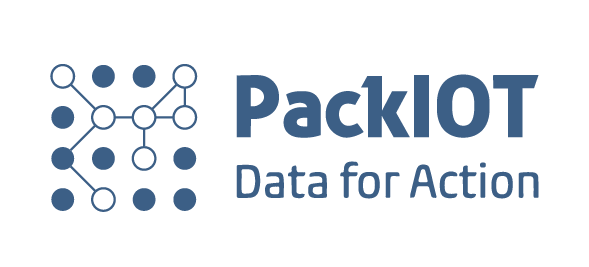By Fernando Pacheco, COO at PackIOT
The situation described in the title is more common than one can imagine. And if you have come this far, it is likely that you have been facing this challenge in your factory.
This problem can occur in several ways (they are not mutually excluding):
- Your machines are already factory-sensed and deliver general data, but you don’t know what to do with it.
- Your data is stored in the PLC, but nobody could access it in an easy way and/or does not gets insights and information from there (you don’t have a front-end tool, in the end).
- Your plant spends a giant amount of time manually collecting data, but it does not make any decisions.
- you already have a powerful MES in place, which helps you on a piece of the data journey, but you can’t cross these numbers with real production information (actionable data).
And after that, of course, these challenges can lead to other difficult situations, usually described by plant managers as below:
- “I wanted to automate everything. I have the data in different places, but every time we need to put it together, a person needs to sit down, do the research in ERP, or in the quality system, and uses XLS files to generate the reports”.
- “We know where the big problems are. We have been running the factory for 20 years and we do know. Now maybe there are several smaller and easier problems to solve that we may be neglected for lack of information coming from deep analysis of historical data – achieving the famous quick wins”.
- “The collection process is kind of something between mathematics and poetry. To play a factory we need both. Mathematics is quantitative, measurable by sensors. The poetry comes from the operators’ impression, from his feeling about what happened during the day”(we will deeply talk about it below).
- There are two main problems to attack: the generation of reports and the presentation of data in real-time, more alerts and there is also the analysis of historical data to seek opportunities for gains (this point is linked to the second).
No matter what the source of the problem, what counts is the uncertainty that is present on the table: what do I do with these numbers? What questions should I ask to take advantage of this mass of data and help my factory to be more efficient?
First of all, let’s start with a simple framework to address this situation:
- What?
- Where?
- When?
- How long?
- Why?
Taking into consideration the context and specificities of your factory, from now on you can start thinking about the questions you would like to answer. The next step is to take notes (really. Simple like this).
Another easy and feasible action would be to discuss this framework with area directors, production supervisors, plant managers, and shift coordinators. Encourage them to think about questions involving the collected data and what answers they want to get from that data.
This can be an arduous task and having support is fundamental to address the main answers we want to find. This will completely change the landscape of the plant, turning a useless tangle of numbers into actionable information.

Let us help you with this journey.
What?
What is our goal this month?
Are we achieving it?
What is our production right now?
What is our planned downtime? Are we on track?
What is our actual OEE?
What is our throughput?
Where?
In which line our OEE is better?
Where is our bottleneck?
Which machine is having more unplanned downtime episodes?
When?
When is our peak in production?
When our best shift has been occurring?
When our average scrap rate is higher?
Which is our best shift in terms of total production?
Which is our best shift in terms of lower scrap rate?
How long?
For how long we have been down?
What is our unscheduled downtime?
How long is our changeover time?
Why?
“Data is not the answer. Data is the question”
So, now we can go deep through the data and try to find out the reasons behind the data. This is one of the most important keys to achieve success on the “actionable data” approach.
At this point, the culture of your organization is essential. If you already adopt lean manufacturing practices, you are likely to hold regular continuous improvement meetings. And they are excellent opportunities to apply the concept of “actionable data”.
Start by encouraging your team to take the data to these meetings. This is a good time to find the “why” and effectively make decisions that will lead your plant to more operational efficiency.
Extra 1: How?
How my data should be available to the right people? (it’s important to have the right tool to make sure that all information is easily available).
How the operators can be aware of the data? How can they see the numbers in real-time or with the correct time frame?
How can I receive the best reports? How can I see the best dashboards, which really show me the important things in my factory? (remember, above you already decided what is important, as you listed the right questions. Now it’s time to make it visible and highlight the most important information you need to see on a daily basis. ACTIONABLE DATA).
Extra 2: Who?
To address those matters, you do need some “ownership” in the workplace. The “Who” is really important here.
Who is going to be in charge of analyzing the numbers? (And pay attention: it’s really common to think “I don’t have anyone free to run this task. But remember, you already had someone inputting data manually for many years. So, maybe it’s just an issue of allocating people to the right place).
Who is going to be in charge of sending the right reports?
Who is responsible for providing insights?
Who is responsible for making decisions with those insights?
You must start…now
As you have seen so far, the thing is an equation involving PEOPLE, MINDSET, CULTURE, MANAGEMENT, AND TECHNOLOGY.
Maybe you can start to dive into ACTIONABLE DATA using an MVP (minimum viable product) framework. An MVP is the simplest version of a product that can be launched with minimal effort and development. In other words, start small, achieve that mentioned quick wins and then go bigger. You can start using a production analytics dashboard just in a few lines, learn, improve and then go to the rest of your factory. We’ve been a lot of successful IIoT cases using this perspective and they have been fostering incredible efficiency on the shop flor.
You might also like:




